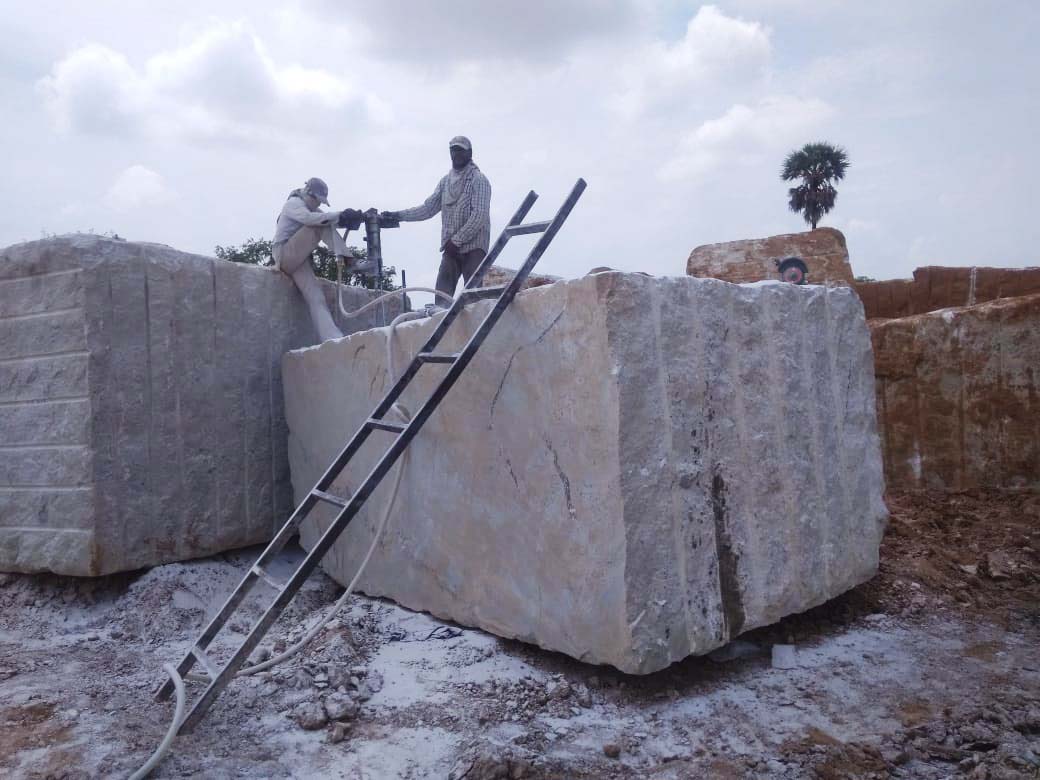Discovering Granite Quarries in South Africa: A Comprehensive Guide
Discovering Granite Quarries in South Africa: A Comprehensive Guide
Blog Article
Uncovering the Rich Background and Sustainable Practices of Granite Quarrying
As we base on the precipice of uncovering the elaborate tapestry of granite quarrying, a trip through time exposes not simply the physical act of drawing out rock yet additionally the social and historical value woven right into the really textile of this practice. From the old beginnings that laid the structure for modern-day quarrying techniques to the sustainable practices that are shaping the future of this industry, each carve mark on granite surfaces narrates waiting to be unearthed (granite quarries in south africa). The heritage of granite quarrying extends much beyond simple extraction; it is a testimony to human resourcefulness, strength, and the long-lasting allure of this marvelous rock
Old Origins of Granite Quarrying
Going back to ancient civilizations, the method of quarrying granite has been an indispensable part of human history and building development. The earliest evidence of granite quarrying go back to ancient Egypt, where substantial pyramids and complex sculptures were crafted from this resilient stone. The Egyptians used primitive tools to draw out granite blocks from quarries, showcasing the importance of this material in their monumental buildings.
Progressing in background, the Greeks also made considerable payments to the quarrying of granite. The Greeks made use of granite in various building wonders, such as holy places and statuaries, showing their skill in shaping and sculpting this durable stone. The Romans further fine-tuned the techniques of quarrying granite, utilizing advanced tools like blades and hammers to remove and shape granite for their iconic frameworks.
Through the centuries, the practice of quarrying granite has actually developed, with modern-day technologies boosting performance while preserving the classic allure of this natural stone - granite quarries in south africa. From ancient human beings to modern contractors, the legacy of granite quarrying remains to form our globe
Evolution of Quarrying Methods
The evolution of quarrying strategies has actually been marked by a continuous progression in the direction of better performance and accuracy in removing granite. Early quarrying strategies included hands-on labor with fundamental tools such as blades, hammers, and wedges to remove granite blocks from the planet.
In more current times, the advent of equipment reinvented the quarrying market, making it possible for faster extraction prices and enhanced efficiency. Technologies such as ruby wire saws, high-pressure water jets, and pneumatically-driven drills have actually come to be basic in contemporary quarries, enabling specific cutting and decreased waste. Advancements in computer-controlled equipment and 3D modeling have maximized quarrying procedures, leading to minimal environmental impact and improved sustainability techniques. As the need for granite continues to climb, the development of quarrying techniques stays important to conference industry needs successfully and sustainably.
Social Significance of Granite
Granite holds an extensive cultural importance throughout numerous worlds due to its long-lasting presence in architectural masterpieces and respected monoliths. From the stunning pyramids of Egypt to the intricate makings of the Angkor Wat temple in Cambodia, granite has been a product of selection for sharing magnificence and long life in social heritage. In old Rome, granite columns adorned temples and public buildings, signifying strength and durability. The social significance of granite prolongs past its physical attributes; it personifies strength, security, and timelessness, making it a symbol of sustaining traditions and practices.

Lasting Practices in Quarrying
Among the abundant background of granite quarrying and its cultural significance lies an expanding emphasis on sustainable practices within the industry. As environmental recognition and concerns about source exhaustion have enhanced globally, the quarrying market has actually increasingly welcomed lasting methods to decrease its influence on the environment and bordering areas.

In addition, recovery and rehabilitation of quarry websites post-extraction are essential to sustainable practices. By recovering quarried locations to an all-natural or helpful state, such as creating wild animals habitats or recreational areas, quarriers can offset the environmental impact of their operations and contribute positively to the regional ecological community.
Tradition of Granite Quarrying
With a historic background soaked in craftsmanship and commercial development, what enduring effect has granite quarrying left on the landscape of modern culture? The tradition of granite quarrying transcends plain removal methods; it has actually formed building marvels, urban landscapes, and social heritage worldwide. The sturdy nature of granite has actually made it a preferred option for monuments, buildings, and infrastructure, standing as a testament to the skill and virtuosity of quarry employees across generations.
In addition, the economic impact of granite quarrying can not be forgotten. The industry proceeds to give employment possibility and drive local economic situations in areas where granite removal is widespread. It has also stimulated technical developments in quarrying techniques and devices, leading to a lot more effective and sustainable techniques.
In regards to sustainability, the tradition of granite quarrying consists of initiatives to alleviate environmental Our site effects with reclamation projects and responsible resource monitoring. By balancing financial passions with ecological stewardship, the sector makes every effort to make certain that future generations can continue to gain from this long-lasting natural deposit.
Final Thought

Report this page